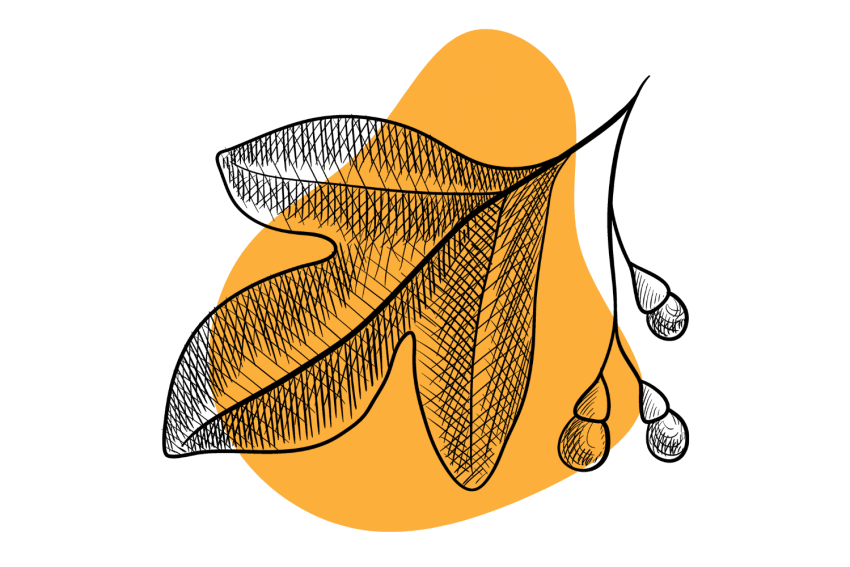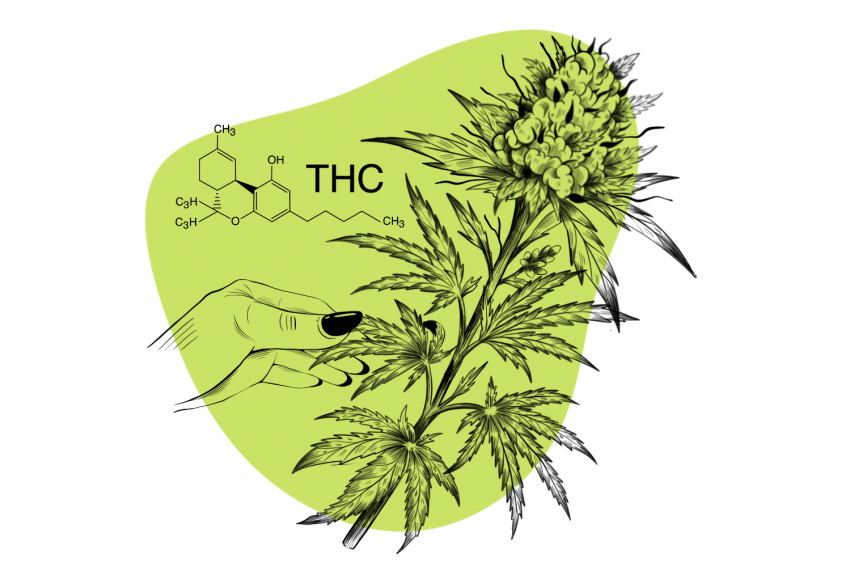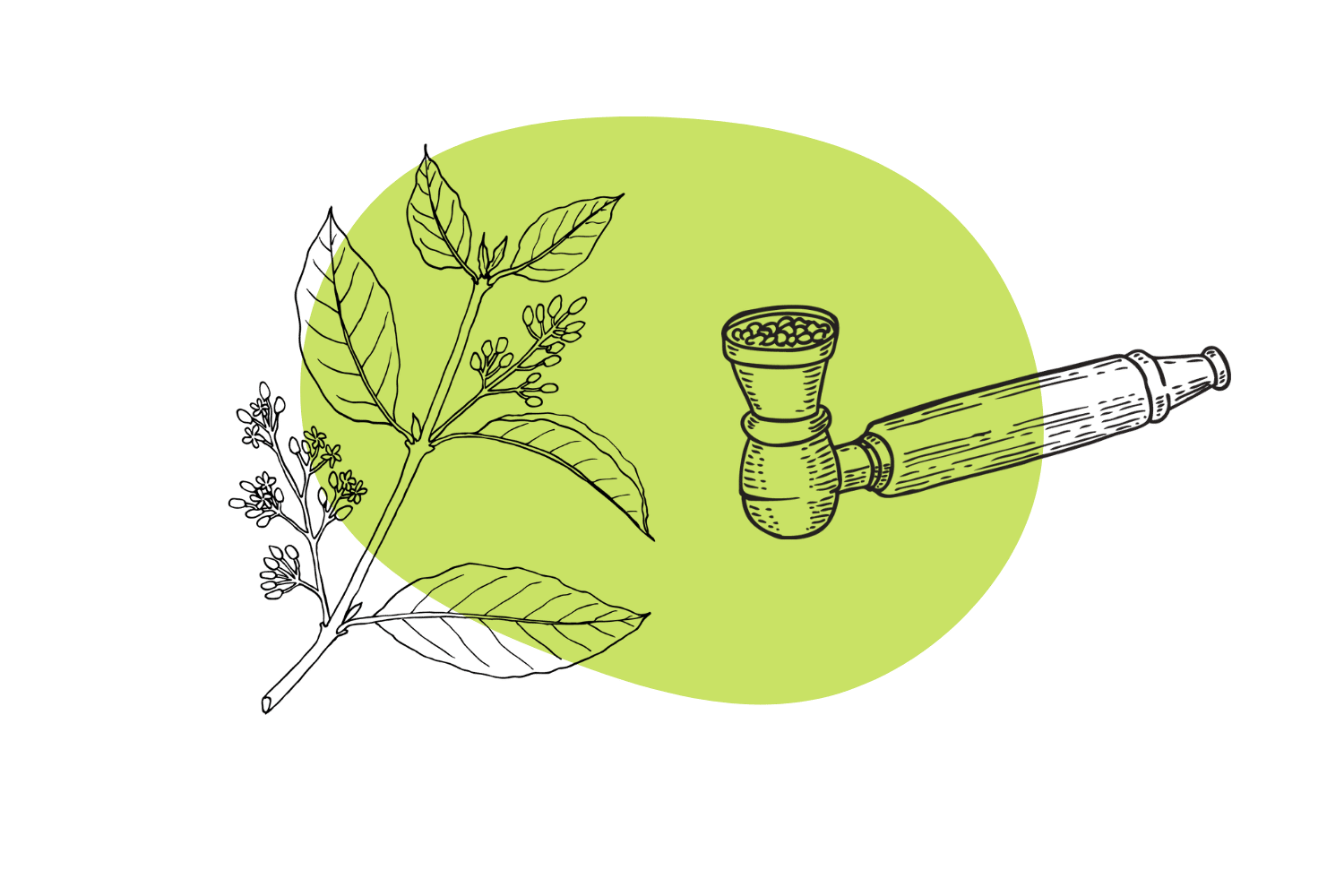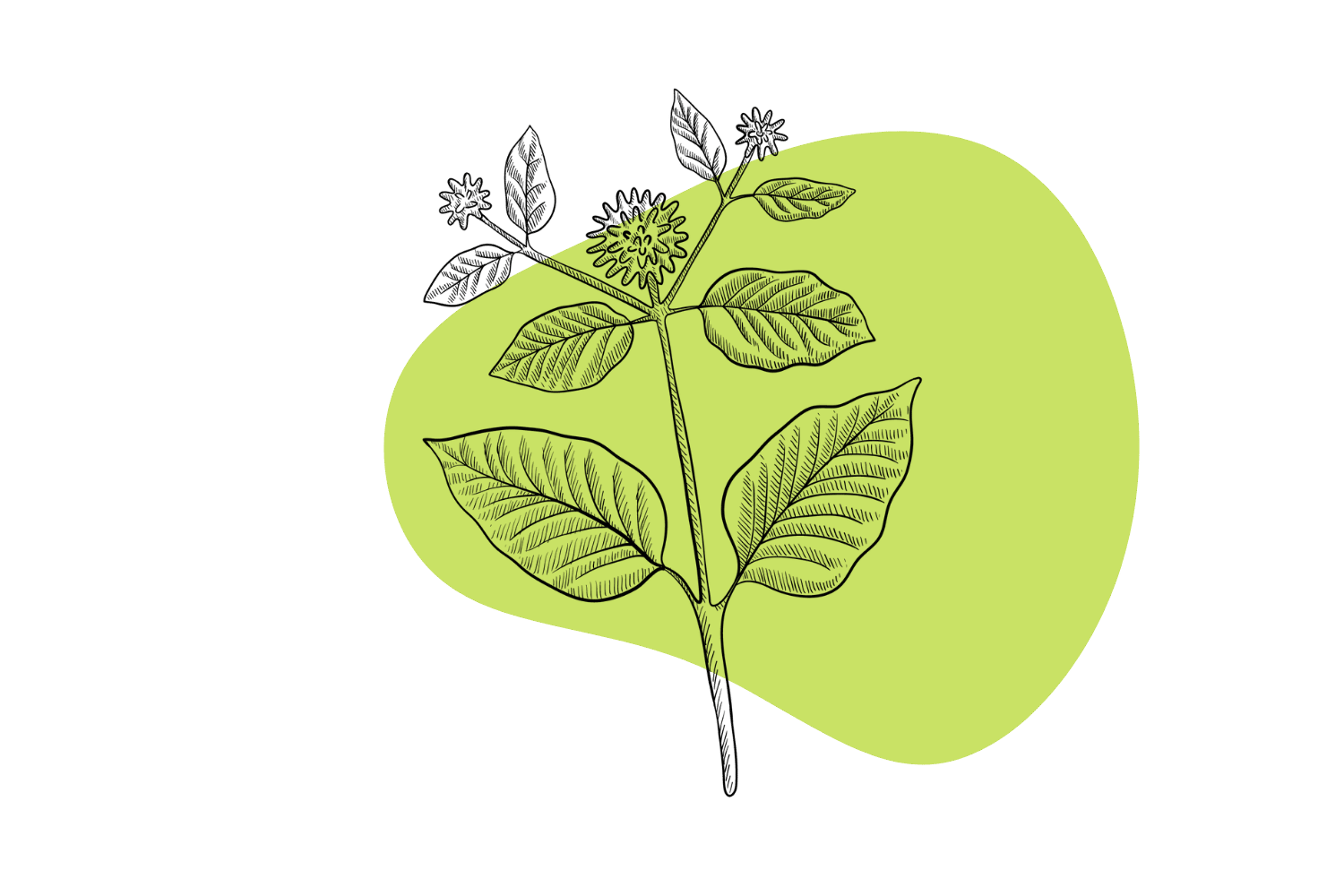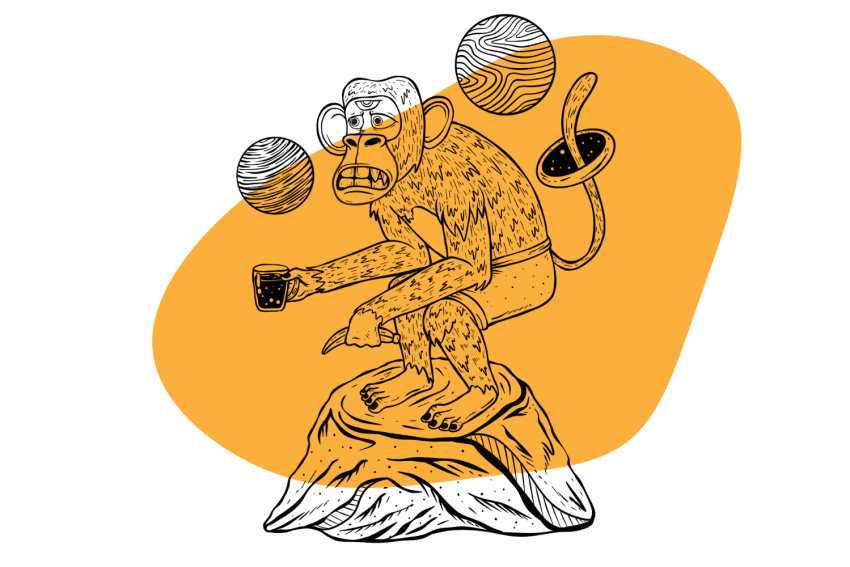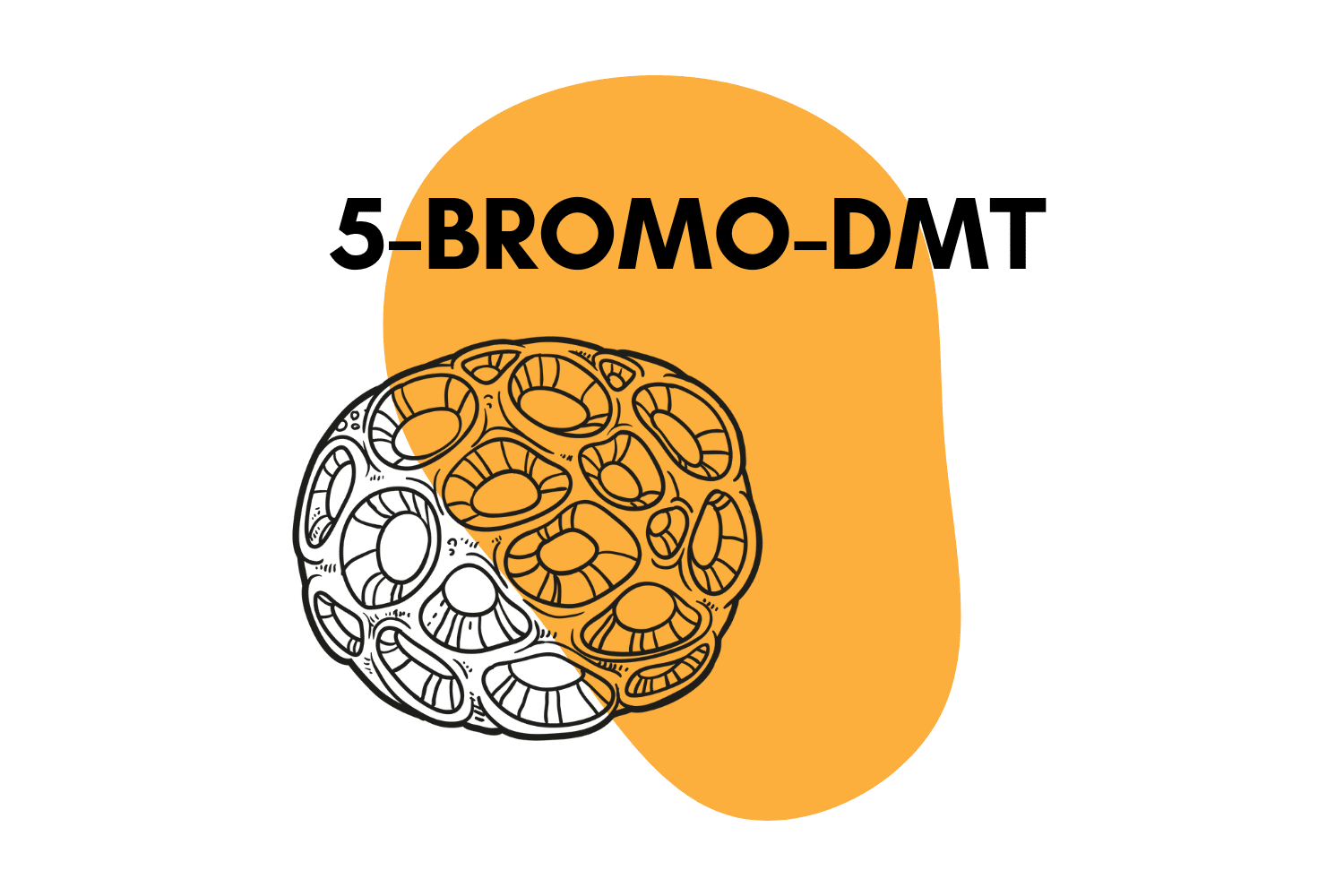What is Mitragynine? Everything You Need to Know About Kratom’s Primary Alkaloid
There are more than 16 active alkaloids in kratom, but up to 67% of the alkaloid profile comes down to just one compound — mitragynine. Here’s how it works.
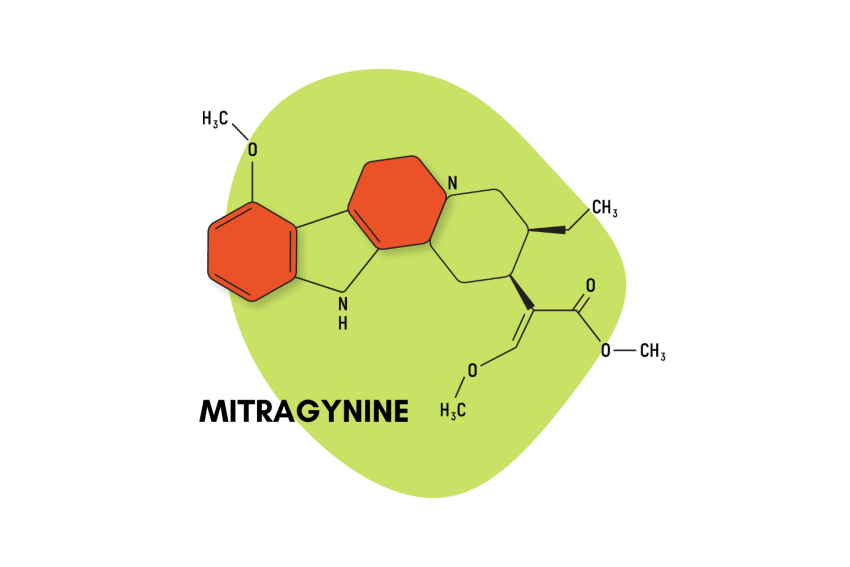
Kratom is becoming increasingly popular in the western hemisphere, and its primary alkaloid — mitragynine — is getting more and more attention. Scientists are still researching this active ingredient, but we already know a lot, thanks to 50 years of examining kratom.
Let’s look at exactly what mitragynine is, where it comes from, and how it interacts with the body. We’ll also explore what the research says so far about this controversial compound.
What is Mitragynine?
Mitragynine is one of the active alkaloids found naturally in Mitragyna speciosa, a tree that grows in tropical forests around Southeast Asia, predominantly in places like Indonesia, Bali, Thailand, Vietnam, and Malaysia.
There are dozens of other alkaloids found in this plant, but mitragynine appears in the highest concentrations and seems to have the most significant impact on dopamine, opiate, serotonin, and norepinephrine receptors.
What Does Mitragynine Do?
Mitragynine plays several roles in the human body and is responsible for a few of the primary effects you can expect when using kratom. We’ll briefly discuss the major effects below and how they work.
1. Pain Relief (Opiate-Like Activity)
Kratom is quite commonly used to dull pain and delay the onset of fatigue. People have used it for these purposes for hundreds — or perhaps, thousands — of years in traditional medicine. Most of kratom’s pain-relieving effects are attributed to another alkaloid — 7-hydroxymitragynine — but mitragynine is still responsible for this benefit.
Mitragynine affects the body much like prescription opiates, such as oxycodone and hydrocodone.
Scientific research shows mitragynine binds with μ-opioid receptors [1], which are specifically responsible for managing the body’s response to pain [2]. Compounds like mitragynine bind to these receptors and prevent them from sending pain signals to the brain. When the pain stimuli are intercepted, the intensity of the signals reaching the brain is reduced, affecting the overall perception of pain.
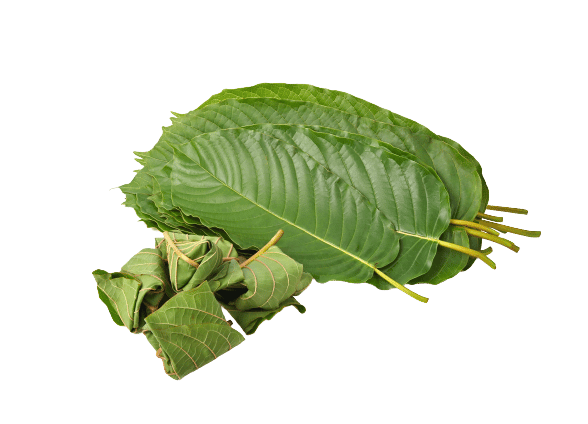
The primary difference is the side effects of opiate use, including respiratory system depression [3]. Kratom is also far less dangerous and addictive than opiates — an important distinction for those who need pain relief but have a history of addiction.
Mitragynine also binds to δ-opioid receptors, another receptor responsible for managing pain [4]. The same research study suggests mitragynine can block intracellular calcium channels required for pain perception.
This alkaloid is also an alpha-2 agonist, meaning it inhibits norepinephrine release, causing a cessation of neuropathic-specific pain [5,6,7].
2. Euphoria (Dopaminergic Effects)
As mentioned above, mitragynine interacts with μ-opioid receptors, which send signals to the brain usually related to pain but are also involved with regulating dopamine [4].
Research shows that mitragynine can improve the user’s mood and outlook on life, possibly because it increases dopamine levels in the brain by binding to dopamine receptors [8]. Increased dopamine levels can lead to arousal, feelings of motivation, and increased energy and focus [9]. All of these natural responses combine to create a feeling of euphoria that can be quite pleasant, especially when combined with pain relief.
3. Sedation (GABAergic Activity)
Finally, mitragynine is responsible for feelings of relaxation, sedation, and a general cessation of anxiety and stress. Both μ-opioid and δ-opioid receptors play a role in feelings of stress and relaxation [10]. Mitragynine binds to both, making it a central nervous system suppressant. As such, it’s unsurprising that people use kratom as a sleep aid and overall relaxant.
Is Mitragynine Safe?
Mitragynine is generally safe [11], but it certainly comes with its fair share of problems. However, you can avoid most issues by being responsible with how you use it.
Kratom and its alkaloids are important harm-reduction tools for avoiding and breaking addictions to substances such as heroin, fentanyl, prescription painkillers, and benzodiazepines.
With that being said, any chemical or compound that interacts with the human body can potentially be dangerous, and mitragynine is no exception. We’ll explain some of the side effects of regular kratom use below.
Risk of Addiction
The most serious and most commonly cited risk of using mitragynine — via kratom — is dependency. Any chemical that interacts with neurotransmitters and the body’s opioid receptors comes with the risk of dependency. Chemicals that affect your brain chemistry can become physiologically addictive, especially if you’re using them to treat deep-seated issues like anxiety or depression.
Kratom is an addicting compound, but avoiding this side effect is relatively easy. Most people are fine by taking a week or two-week break from kratom once a month and limiting weekly intake to four to five days a week.
Kratom is generally far less addictive than opioids and is actually an effective tool to wean people off of opiate addiction. Still, it’s important to understand the risks so that you can avoid issues.
Kratom Wobbles
The wobbles refer to the loss of coordination, nausea, and dizziness users experience after taking too much kratom.
Kratom can cause your blood pressure to drop or rise — depending on the strain and dosage — leading to dizziness, especially when moving from lying down or sitting to standing. Staying hydrated can help mitigate this symptom.
Lethargy
Any drug or compound that interacts with your dopamine or hormone levels can cause lethargy. Mitragynine can increase adrenaline levels, which, over time, raises your baseline level of excitement and stimulation and leads to lethargy and exhaustion — especially once the kratom wears off and adrenaline levels drop below that baseline.
Anxiety
Kratom’s effects on adrenaline can lead to anxiety, especially shortly after using it. Adrenaline is primarily responsible for the body’s fight-or-flight mechanism. Increased levels of this hormone can cause users to feel stressed or anxious, similar to what you’d expect after drinking several cups of coffee.
Is Mitragynine an Opiate?
Mitragynine acts like an opiate, but it is not considered to be one. It binds to opioid receptors, producing pain-relieving and sedative effects, much like prescription opiates. However, mitragynine is far less addictive and doesn’t cause the same adverse effects that conventional opiate drugs do.
Specifically, kratom does not slow down your respiratory system and is not likely to cause death by overdose. The euphoria is also less intense, making kratom less addictive overall.
Where Does Mitragynine Come From?
Mitragynine is naturally found in kratom, which is made from the leaves of the Mitragyna speciosa tree. It’s currently the only known natural source of mitragynine and many other alkaloids, including 7-hydroxymitragynine and 9-hydroxycorynantheidine.
Some other alkaloids in kratom can be found in plants like Pausinystalia johimbe or Uncaria rhynchophylla.
What Kratom Strains Contain the Most Mitragynine?
If you’re looking to use mitragynine for pain, anxiety, or stress relief, or feelings of euphoria, you’ll want strains with high levels of this psychoactive alkaloid.
Kratom comes in three primary categories depending on how it was processed after harvest: white vein, green vein, and red vein.
White kratom strains tend to be highest in mitragynine content. Furthermore, strains originating in Thailand are usually the most mitragynine-dense, while Malaysian strains tend to have some of the lowest concentrations.
Some specific strain suggestions for high mitragynine content include White Bali, White Elephant, and White Thai.
Mitragynine Dosage Guidelines
Mitragynine is very rarely available in its raw form, and most users take this alkaloid via kratom powder, leaves, or extracts. In fact, isolated kratom extracts have proven time and time again to be less effective and more dangerous than the raw plant. Kratom alkaloids produce complicated effects and likely rely on a synergistic action between numerous compounds rather than the effects of just one.
As such, it’s more or less useless to have a recommended dosage of pure mitragynine.
Instead, dosing mitragynine via kratom is more practical. High doses are best for those wanting pain relief and sedation. For mitragynine-rich strains, we recommend between 5 and 6 grams of powder.
Beginners should start with a lower dose — between 2 and 5 grams — to avoid unwanted side effects.
Mitragynine is a somewhat unique compound in that the effects vary based on how much you consume. If you want euphoria or mild stimulation, a smaller dose of between 1 and 3 grams of kratom powder will likely do the trick.
It’s also important to choose a strain that contains high levels of mitragynine and relatively low levels of 7-hydroxymitragynine. As we mentioned, white strains have more mitragynine; red strains tend to have higher concentrations of 7-hydroxymitragynine.
Final Thoughts: MItragynine and Its Uses
Mitragynine is one of the primary alkaloids in kratom, which refers to crushed leaves from the Mitragyna speciosa tree. It’s rarely available as a concentrated alkaloid and is usually consumed via kratom powder. Lower doses cause euphoria and stimulation, while larger amounts cause sedation and relief from anxiety and pain.
Mitragynine is safer than prescription opioids, though the effects are similar. However, there are some side effects — including dependency, nausea, dizziness, and lethargy — that you should be on the lookout for. Overall, mitragynine is a great option for those looking to reduce pain, induce relaxation, or increase motivation, and it’s safer and more natural than other prescription drugs.
Resources
- Babu, K. M., McCurdy, C. R., & Boyer, E. W. (2008). Opioid receptors and legal highs: Salvia divinorum and kratom. Clinical toxicology, 46(2), 146-152.
- Pathan, H., & Williams, J. (2012). Basic opioid pharmacology: an update. British journal of pain, 6(1), 11-16.
- Boyer, E. W., Babu, K. M., Adkins, J. E., McCurdy, C. R., & Halpern, J. H. (2008). Self‐treatment of opioid withdrawal using kratom (Mitragynia speciosa Korth). Addiction, 103(6), 1048-1050.
- Suhaimi, F. W., Yusoff, N. H., Hassan, R., Mansor, S. M., Navaratnam, V., Müller, C. P., & Hassan, Z. (2016). Neurobiology of Kratom and its main alkaloid mitragynine. Brain research bulletin, 126, 29-40.
- Vicknasingam, B., Chooi, W. T., Rahim, A. A., Ramachandram, D., Singh, D., Ramanathan, S., … & Chawarski, M. C. (2020). Focus: Plant-based medicine and pharmacology: Kratom and pain tolerance: A randomized, placebo-controlled, double-blind study. The Yale Journal of Biology and Medicine, 93(2), 229.
- Giovannitti Jr, J. A., Thoms, S. M., & Crawford, J. J. (2015). Alpha-2 adrenergic receptor agonists: a review of current clinical applications. Anesthesia Progress, 62(1), 31-38.
- Obata, H. (2017). Analgesic mechanisms of antidepressants for neuropathic pain. International journal of molecular sciences, 18(11), 2483.
- Johnson, L. E., Balyan, L., Magdalany, A., Saeed, F., Salinas, R., Wallace, S., … & Grundmann, O. (2020). Focus: Plant-based Medicine and Pharmacology: The Potential for Kratom as an Antidepressant and Antipsychotic. The Yale Journal of Biology and Medicine, 93(2), 283.
- Loi, B., Sahai, M. A., De Luca, M. A., Shiref, H., & Opacka-Juffry, J. (2020). The role of dopamine in the stimulant characteristics of novel psychoactive substances (NPS)—Neurobiological and computational assessment using the case of desoxypipradrol (2-DPMP). Frontiers in Pharmacology, 11, 806.
- Machelska, H., & Celik, M. Ö. (2018). Advances in achieving opioid analgesia without side effects. Frontiers in pharmacology, 9, 1388.
- Veltri, C., & Grundmann, O. (2019). Current perspectives on the impact of Kratom use. Substance abuse and rehabilitation, 10, 23.



